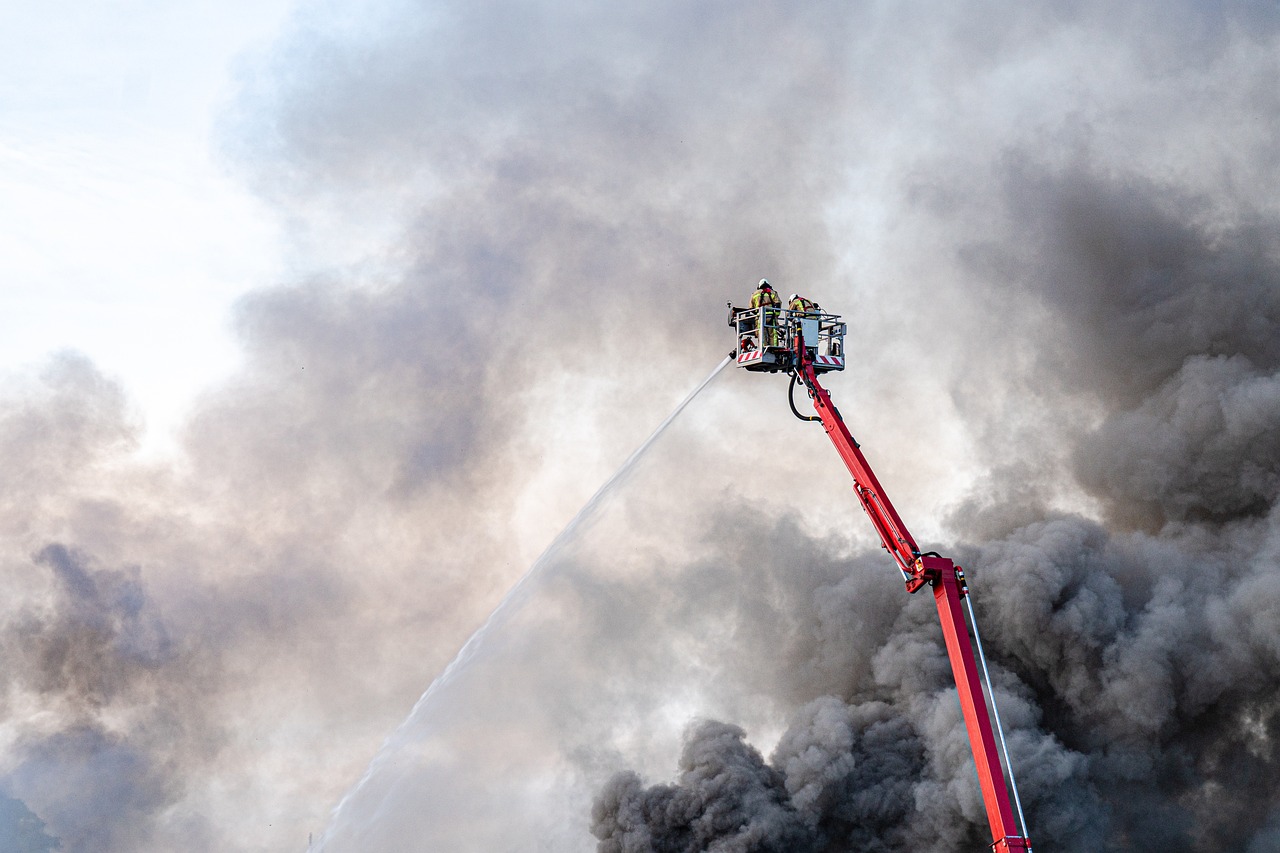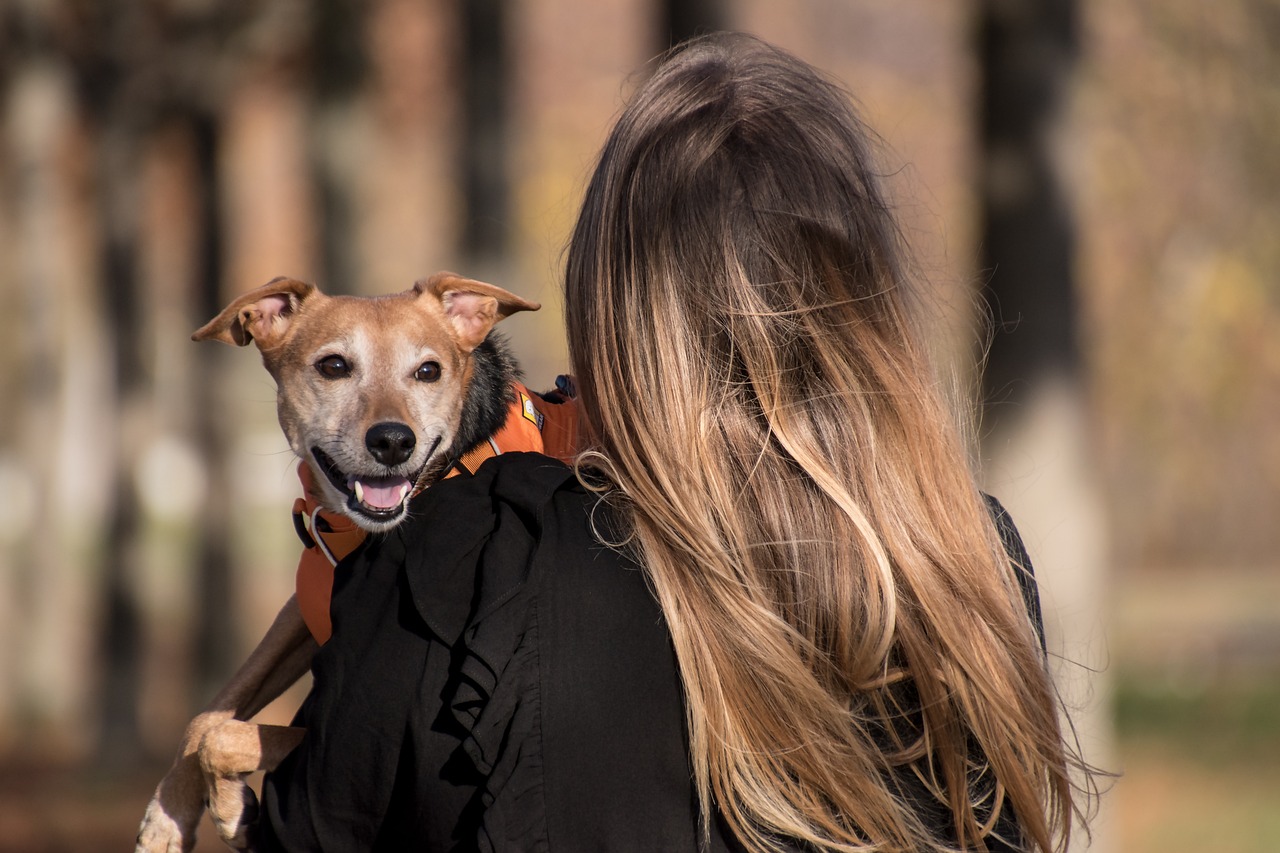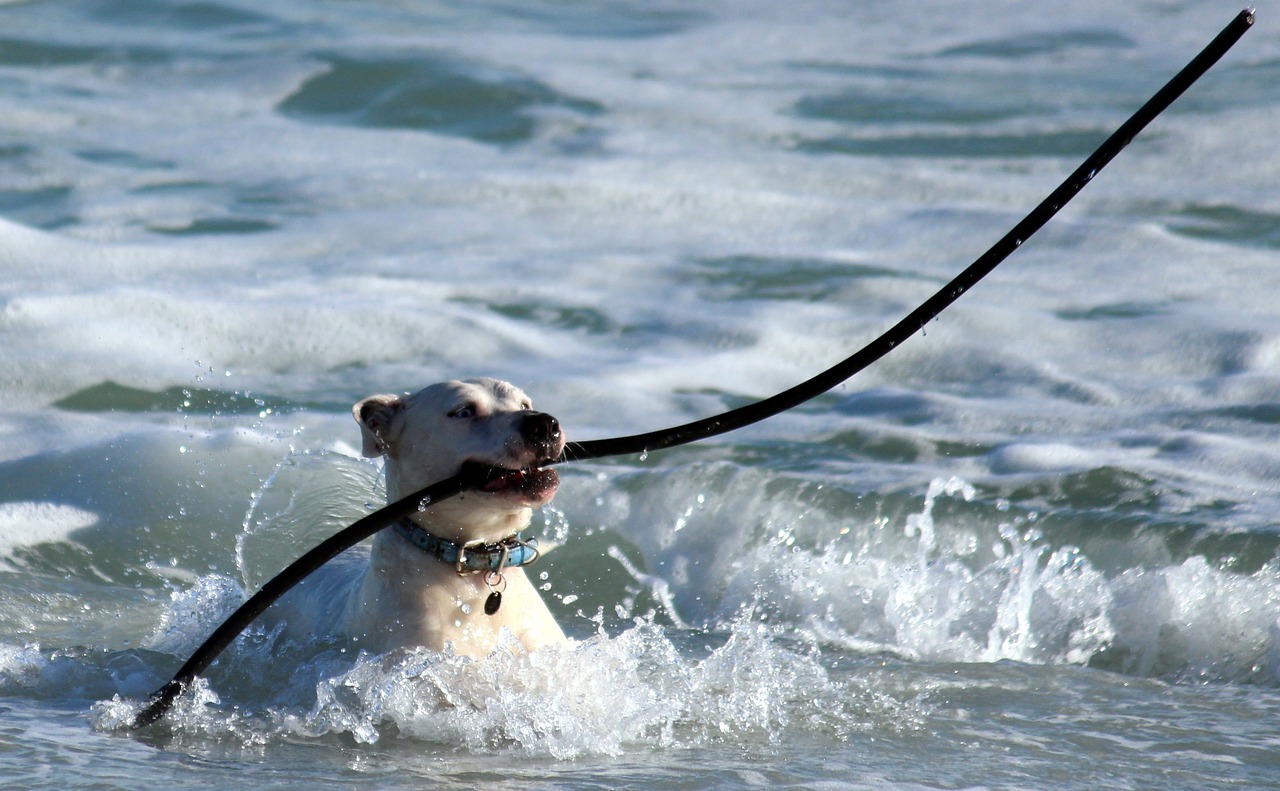Essential Elements of Emergency Preparedness for Pet Owners
As pet owners, we often consider our furry friends as integral parts of our family. But just like any family member, they depend on us for their safety and well-being, especially in times of crisis. Emergencies can strike without warning, whether it be a natural disaster like a hurricane, a sudden health crisis, or even a fire in your home. Therefore, being prepared is not just a good idea; it's a necessity. In this article, we will explore the crucial aspects of preparing for emergencies as a pet owner, ensuring that your beloved companions are safe and sound during unforeseen situations.
Imagine the panic of realizing you need to evacuate your home quickly, with your pet in tow. The thought alone can be overwhelming. However, with a solid emergency plan in place, you can navigate these situations with confidence. From understanding potential risks to creating a comprehensive emergency plan, we will delve into the essential elements that every pet owner should consider. After all, being prepared is not just about having supplies; it’s about having peace of mind knowing that you’ve taken the necessary steps to protect your furry family members.
In the upcoming sections, we will discuss various strategies for identifying risks, creating an emergency plan, and building an emergency kit. Additionally, we will explore training techniques that can help your pets cope with stressful situations, ensuring that both you and your pets can handle emergencies with ease. Let’s embark on this journey of preparedness together, ensuring that our pets are ready for anything life throws our way!
Recognizing potential emergencies is the first step in effective preparedness. As pet owners, we must be aware of the various risks that can impact our pets, including natural disasters like floods, earthquakes, and wildfires, as well as health crises such as outbreaks of contagious diseases. Each of these situations can pose unique challenges for your pets, requiring different strategies for safety and care.
For instance, during a hurricane, you might need to evacuate to a pet-friendly shelter, while in the case of a health crisis, you may need to take extra precautions to keep your pet safe from exposure to illness. Understanding these risks allows you to tailor your emergency plan to address the specific needs of your pets. It’s essential to stay informed about local weather patterns and potential hazards in your area, as well as to have a clear understanding of the resources available to you and your pets in times of need.
An effective emergency plan is essential for pet owners. This plan should outline evacuation routes, communication strategies, and care arrangements for your pets during emergencies. Start by identifying the safest routes out of your home and community, ensuring that these routes are accessible for you and your pets. Consider the locations of pet-friendly shelters and hotels, which can provide a safe haven during a crisis.
Knowing where to go in an emergency is crucial. Research local pet-friendly shelters, hotels, and safe havens in advance. Having this information readily available can save precious time when every second counts. Make a list of these locations, including their contact information, and keep it in your emergency kit.
Connecting with local animal shelters, veterinarians, and emergency services can provide additional support during emergencies. Compile important contact information, including phone numbers and addresses, for quick access during a crisis. This way, you can quickly reach out for help if needed, ensuring that you and your pet are never alone in a time of need.
Traveling during an emergency requires special considerations. Make sure your pets are secured in vehicles using harnesses or carriers, as this will keep them safe during transport. Additionally, prepare for potential travel disruptions by having essential supplies on hand, including food, water, and medications. Being proactive can make a significant difference in ensuring your pet's safety while on the road.
An emergency kit is essential for every pet owner. This kit should include the necessary supplies to keep your pets comfortable and safe during a crisis. Here’s a quick rundown of what to include:
- Food and Water: Enough for at least three days.
- Medications: Any prescriptions your pet may need.
- First Aid Items: Bandages, antiseptic wipes, and any specific items your pet may require.
- Identification: Ensure your pet has a collar with an ID tag and consider microchipping.
- Comfort Items: A favorite toy or blanket can help soothe your pet during stressful times.
Training pets for emergencies can significantly reduce stress during a crisis. Acclimating your pets to their carriers and teaching them essential commands can aid in their safety. Consider practicing evacuation drills, so your pets become familiar with the process and remain calm when it’s time to act.
Desensitizing pets to loud noises and chaotic situations can help them remain calm during emergencies. Gradually expose your pets to various sounds, such as thunder or sirens, in a controlled environment. Reward them with treats and praise to create positive associations with these stimuli.
Teaching pets specific behaviors can enhance safety in emergencies. Focus on essential commands, such as "come," "stay," and "leave it." These commands can help you manage your pets effectively during a crisis, ensuring their safety and your peace of mind.
Q: What should I include in my pet's emergency kit?
A: Your pet's emergency kit should include food, water, medications, a first aid kit, identification, and comfort items.
Q: How can I find pet-friendly shelters during a disaster?
A: Research local resources ahead of time and keep a list of pet-friendly shelters and hotels in your emergency kit.
Q: What training should I focus on for my pets?
A: Focus on essential commands and desensitization techniques to help your pets remain calm during emergencies.

Understanding the Risks
As a pet owner, it's essential to grasp the potential risks that could arise during emergencies. Emergencies can strike at any moment, and understanding these risks is the first step in ensuring your furry companions remain safe and sound. Think about it – just like you wouldn't leave your home without an umbrella when dark clouds loom overhead, you shouldn't overlook the possibility of emergencies that can affect your pets.
Common risks include natural disasters such as hurricanes, floods, earthquakes, and wildfires. Each of these scenarios can pose significant threats not only to your home but also to your beloved pets. For instance, during a hurricane, you might have to evacuate quickly, leaving little time to gather your pet's essentials. Similarly, a sudden flood could trap you and your pets indoors, creating a stressful and dangerous situation. Understanding these scenarios helps you prepare effectively, ensuring that you have a plan in place before disaster strikes.
Health crises can also be a major concern. Imagine a scenario where a local outbreak of a contagious disease occurs. Your pets could be at risk, and you might need to take swift action to protect them. This could involve isolating your pets, seeking veterinary care, or even having to relocate temporarily. It's crucial to stay informed about local health alerts that could impact your pets and to have a plan for such situations.
In addition to natural disasters and health crises, there are other risks to consider:
- Accidents: Car accidents or household mishaps can lead to injuries requiring immediate attention.
- Loss: In the chaos of an emergency, pets can easily become lost or separated from their owners.
- Behavioral Issues: Stressful situations can lead to behavioral changes in pets, making them more unpredictable.
By recognizing these risks, you can take proactive steps to safeguard your pets. Consider creating a risk assessment for your household. Ask yourself questions like: What types of emergencies are most likely to occur in my area? How would my pets react in these situations? By answering these questions, you can tailor your emergency preparedness plan to address the specific challenges you might face.
In summary, understanding the risks associated with emergencies is a crucial aspect of pet ownership. It empowers you to create a robust emergency plan that can mitigate the impact of unforeseen events on your furry friends. Remember, being prepared is not just about having supplies; it's about being mentally and strategically ready to protect the ones you love when it matters most.

Creating an Emergency Plan
When it comes to our beloved pets, having a solid emergency plan is not just a good idea—it's essential. Think of it like creating a safety net for your furry family members. Emergencies can strike at any time, whether it's a natural disaster, a health scare, or even a sudden evacuation. By laying out a comprehensive plan, you can ensure that your pets are not only safe but also feel secure during such stressful times.
First things first, start by identifying potential emergencies that could affect your area. Are you in a flood zone? Do wildfires pose a threat? Understanding these risks will help you tailor your emergency plan specifically for your pets. For instance, if you live in an area prone to hurricanes, you might want to have a designated safe room in your house where your pets can go during storms. It’s like preparing a cozy bunker for them!
Next up, create a detailed evacuation plan. This should include:
- Evacuation Routes: Know multiple ways to leave your area. If one route is blocked, having alternatives can save precious time.
- Transportation: Ensure you have a pet carrier that your pet is comfortable with, and that fits in your vehicle. Practice loading your pet into the carrier to make it a familiar experience.
- Meeting Points: Designate a safe meeting point where you and your pets can regroup if separated. This could be a friend’s house, a local park, or a pet-friendly shelter.
Communication is another critical component of your emergency plan. Make sure all family members are on the same page. Create a group chat or use a shared document that outlines the steps to take during an emergency. This ensures that everyone knows their role, reducing the chaos when it matters most. Think of it as your family’s emergency playbook!
Additionally, consider your pet's comfort during emergencies. Just as you might pack a bag for yourself, you should have a dedicated emergency kit for your pets. This kit should include food, water, medications, and any special items your pets might need, such as their favorite toys or blankets. Having these items ready to go can help ease their anxiety in stressful situations.
Lastly, don't forget about local resources. Familiarize yourself with nearby pet-friendly shelters, hotels, and veterinary clinics. Having this information at your fingertips can be a lifesaver. Compile a list of important contacts, including local animal shelters and emergency services, so you can quickly access help if needed. You could even create a simple table to organize this information:
| Resource Type | Name | Contact Information | Address |
|---|---|---|---|
| Veterinary Clinic | Happy Paws Vet | (555) 123-4567 | 123 Pet Lane, Furry Town |
| Pet-Friendly Shelter | Safe Haven Shelter | (555) 987-6543 | 456 Safe St, Furry Town |
| Animal Control | Furry Town Animal Control | (555) 654-3210 | 789 Control Rd, Furry Town |
In summary, creating an emergency plan for your pets is all about preparation and communication. By taking the time to plan ahead, you can help ensure that both you and your furry friends stay safe, calm, and collected when the unexpected occurs. Remember, it’s not just about having a plan; it’s about making sure that everyone involved knows what to do and feels comfortable doing it. So, get started on your emergency plan today—your pets will thank you for it!

Identifying Safe Locations
When an emergency strikes, knowing where to go can make all the difference for you and your furry friends. It’s not just about having a plan; it’s about ensuring that plan includes safe locations where your pets are welcome and can feel secure. Imagine being in the midst of chaos, and you suddenly realize you have nowhere to turn. That’s why identifying pet-friendly shelters, hotels, and safe havens is crucial.
First, start by researching local resources in your area. Many communities have designated emergency shelters that accept pets, especially during natural disasters. You can typically find this information on your city or county’s emergency management website. It’s also a good idea to connect with local animal shelters and rescue organizations, as they often have up-to-date information on safe locations for pets during emergencies.
It’s also wise to consider alternative accommodations. Not all hotels are pet-friendly, so when planning your emergency routes, keep a list of nearby hotels or motels that welcome pets. You can use online resources like BringFido to find pet-friendly lodging options. Additionally, some friends or family members might be willing to take in your pets if you need to evacuate. Having a list of these contacts can ease the burden during a stressful time.
Here are a few types of safe locations to consider:
- Pet-Friendly Shelters: Always check if local shelters are ready to accept pets during emergencies. Many now have protocols in place for this.
- Hotels and Motels: Look for establishments that offer pet-friendly policies and consider calling ahead to confirm their accommodations.
- Friends and Family: Having a trusted network can provide a safe haven for your pets if you can’t return home immediately.
- Veterinary Clinics: Some clinics may offer boarding services during emergencies, so don’t hesitate to reach out to them.
Lastly, it’s essential to have a plan for how to get to these locations. Familiarize yourself with the routes and have a backup plan in case your primary route is blocked. Keep a map in your emergency kit, and if possible, use a GPS app that can provide real-time updates on traffic and road conditions. Remember, when the unexpected happens, having a clear understanding of your options can make all the difference in keeping your pets safe and sound.
Q: What should I do if I can’t find a pet-friendly shelter during an emergency?
A: If you can’t find a pet-friendly shelter, consider staying with friends or family who can accommodate your pets. Alternatively, check for local hotels that have pet-friendly policies or contact animal welfare organizations for assistance.
Q: How can I prepare my pet for travel to a safe location?
A: Acclimate your pet to their carrier ahead of time and ensure they’re comfortable in it. Additionally, practice short trips to help them get used to being in a vehicle during emergencies.
Q: Are there any resources available to help me find pet-friendly accommodations?
A: Yes, websites like BringFido and local tourism boards often list pet-friendly accommodations. You can also check with local animal shelters for recommendations.

Local Resources and Contacts
When it comes to ensuring the safety of your beloved pets during emergencies, having a reliable network of local resources and contacts is absolutely essential. Imagine being in the midst of a crisis, your heart racing as you think about your furry friend. Wouldn’t it be a relief to have a list of trusted contacts at your fingertips? This is where preparation meets peace of mind. Start by compiling a list of local animal shelters, veterinarians, and emergency services, ensuring you can quickly access help when it’s needed most.
First and foremost, your local veterinarians should be on speed dial. They are not just your go-to for regular check-ups; they can provide invaluable assistance during emergencies, such as health crises or natural disasters. Make sure to note down their contact information, including after-hours emergency numbers, so you’re never left scrambling in a moment of panic. Consider creating a small emergency contact card that you can keep in your wallet or on your fridge, which includes:
| Resource Type | Name | Contact Number | Address |
|---|---|---|---|
| Veterinarian | Dr. Jane Smith | (123) 456-7890 | 123 Pet Lane, Pet City |
| Local Animal Shelter | Pet Haven Shelter | (987) 654-3210 | 456 Animal Ave, Pet City |
| Emergency Services | City Emergency Services | (555) 123-4567 | 789 Safety St, Pet City |
Additionally, don’t forget to reach out to your local animal shelters. They can provide resources and support during emergencies, including temporary housing for pets if you find yourself displaced. Some shelters even have programs to assist pet owners during disasters, ensuring that no animal is left behind. Establishing a relationship with these organizations can also open doors to community resources that you might not be aware of.
Moreover, consider connecting with local pet-friendly hotels and boarding facilities. In the event that you need to evacuate, knowing where you can take your pets is crucial. Call ahead to inquire about their emergency policies, especially during peak disaster seasons, and ensure they can accommodate your pets. This proactive approach can save you from a lot of stress when time is of the essence.
Finally, it’s wise to stay informed about community resources that may be available during an emergency. Many local governments have dedicated departments for emergency management that can provide updates and assistance. Follow them on social media or sign up for alerts to keep your pet’s safety a top priority. By building a comprehensive network of local resources and contacts, you create a safety net that can make all the difference in a crisis.
Q: What should I do if I can't find a pet-friendly shelter during an emergency?
A: If you can't find a pet-friendly shelter, consider reaching out to local animal shelters or veterinarians for advice. They may have information on temporary boarding facilities or other resources that can help.
Q: How can I prepare my pets for a potential evacuation?
A: Start by getting your pets accustomed to their carriers or crates, and practice loading them into the car. Ensure they are familiar with the sounds and movements of travel to reduce anxiety during an actual evacuation.
Q: What essential items should I include in my pet's emergency kit?
A: Your pet's emergency kit should include food, water, medications, a first aid kit, identification tags, and comfort items like a favorite blanket or toy. Don't forget a leash and a muzzle if necessary!

Traveling with Pets
Traveling with your furry companions during an emergency can feel like a daunting task, but with the right preparation, you can make it a smooth experience. First and foremost, always have a plan. Just like you wouldn't head out on a road trip without a map, you shouldn't embark on an emergency evacuation without knowing how to safely transport your pets. One of the most crucial aspects of traveling with pets is ensuring their safety in the vehicle. This means securing them properly, either in a pet carrier or with a harness that attaches to the seatbelt. Not only does this keep them safe from sudden stops or accidents, but it also prevents them from becoming a distraction while you're driving.
Another essential factor is to prepare for potential travel disruptions. Emergencies can be unpredictable, and you might find yourself stuck in traffic or needing to take a detour. To ease your pet's anxiety during these situations, consider bringing along familiar items such as their favorite blanket or toy. These comforts can help create a sense of security amidst the chaos. Additionally, it's wise to pack a travel bag specifically for your pet. This bag should include:
- Enough food and water for at least three days
- Medications and any necessary medical records
- A first aid kit tailored for pets
- Leash, collar, and ID tags
- Waste bags and a portable litter box (for cats)
When it comes to choosing a destination, do your research ahead of time. Not all hotels or shelters are pet-friendly, so having a list of pet-friendly accommodations can save you a lot of stress. Websites and apps dedicated to pet travel can provide valuable insights and reviews from other pet owners. It’s also a good idea to call ahead and confirm their pet policies, just to avoid any surprises upon arrival.
Lastly, don't forget about your pet's behavior during travel. Some pets may become anxious or restless, so it’s beneficial to take short practice trips before an emergency arises. This helps them get used to being in the car and can make the actual travel experience much smoother. In case of longer journeys, plan for regular breaks to let your pets stretch their legs and relieve themselves. Remember, a little preparation goes a long way in ensuring both you and your pets stay safe and calm during emergencies.
Q: What should I do if my pet gets anxious during travel?
A: If your pet tends to get anxious, consider using calming products like anxiety wraps or pheromone sprays. Additionally, practice short car rides to help them acclimate to the experience.
Q: Are there specific health documents I need to carry?
A: Yes, it’s important to have your pet’s medical records, vaccination history, and any prescriptions they may need. This information can be crucial if you need to visit a vet during your travels.
Q: How can I find pet-friendly accommodations?
A: Use travel apps and websites that specialize in pet-friendly lodging. Always call ahead to confirm their policies and any fees associated with bringing pets.

Building an Emergency Kit
When it comes to ensuring the safety of your beloved pets during emergencies, one of the most crucial steps is building a comprehensive emergency kit. This kit will serve as a lifeline for your furry companions, providing them with the essentials they need to stay safe and healthy during unforeseen situations. Think of it as a survival backpack, but for your pets! The first step in assembling this kit is to gather all necessary supplies, which should be tailored specifically to your pet's needs.
Start by considering the basic necessities: food, water, and medications. It's important to have at least a week's supply of pet food stored in an airtight container to keep it fresh. Don't forget to include a portable water bowl and enough water to last your pet for several days. Just like humans, pets need hydration to survive, especially in stressful situations. And if your pet requires any medications, ensure you have a sufficient supply along with their prescription details. You might want to create a medication schedule to keep track of dosages and timings, ensuring your pet stays healthy even in a crisis.
In addition to food and medications, consider adding some comfort items to the kit. A familiar blanket or toy can provide a sense of security for your pet in an otherwise chaotic environment. Pets can easily become anxious during emergencies, so having something that smells like home can be incredibly soothing. Moreover, don’t forget to include a first aid kit specifically designed for pets. This kit should contain items such as bandages, antiseptic wipes, and any other supplies that might be necessary to treat minor injuries.
To make your emergency kit even more effective, consider including a pet identification tag with your contact information. This can be a lifesaver if you and your pet get separated during an evacuation. Additionally, having a recent photo of your pet can help others identify them if they go missing. You can even create a pet profile that includes important details like breed, age, and any behavioral notes that can assist rescuers in understanding your pet's needs.
Lastly, it's wise to regularly check and update your emergency kit. Just like our own supplies, pet food and medications can expire. Make it a habit to review the contents of your kit every few months, replacing any expired items and ensuring that your supplies are still relevant to your pet's current needs. By taking the time to build and maintain an emergency kit, you’re not just preparing for the worst; you’re also ensuring peace of mind for both you and your furry friend.
- How often should I check my emergency kit? It’s a good idea to check your emergency kit every six months to ensure all items are fresh and up to date.
- What should I do if my pet has special needs? If your pet has special dietary or medical needs, be sure to include extra supplies tailored to those needs in your emergency kit.
- Can I use human medications for my pets? Never give your pets human medications without consulting your veterinarian first, as some can be harmful.

Training Your Pets
When it comes to emergency preparedness, training your pets is often an overlooked but critical aspect. Imagine being in a chaotic situation where your furry friend is scared and confused. How can you ensure their safety and your peace of mind? Training your pets for emergencies can significantly reduce stress during a crisis, making it easier for both of you to navigate through unforeseen circumstances.
One of the first steps in this training process is to get your pets accustomed to their carriers. Think of the carrier as their safe haven. You want them to see it as a cozy retreat, not a scary box. Start by leaving the carrier open in a familiar space, filling it with their favorite toys or treats. Over time, encourage them to explore it at their own pace. This gradual exposure helps them associate the carrier with positive experiences.
Another crucial part of emergency training involves teaching your pets essential commands. Commands like “come”, “stay”, and “leave it” can be lifesavers in emergency situations. For instance, if you need to evacuate quickly, calling your pet to you can prevent them from running off in panic. Regular practice makes these commands second nature. Consider incorporating short training sessions into your daily routine; even a few minutes can make a big difference.
Additionally, it’s essential to expose your pets to various sounds and environments that they might encounter during an emergency. This is where desensitization techniques come into play. Start by playing recordings of loud noises, like sirens or thunderstorms, at a low volume while providing treats and praise. Gradually increase the volume as your pet becomes more comfortable. This method helps them stay calm in stressful situations, reducing the likelihood of panic or fear.
Training isn’t just about commands and exposure; it also includes teaching your pets how to behave in different scenarios. For instance, if you have a dog, practice having them settle down in a designated spot during chaotic moments. This can be invaluable in crowded shelters or during travel. Use a mat or blanket as their “safe space” and reward them for staying there. This behavior can help keep them calm and focused when everything else is in disarray.
In addition to individual training, consider enrolling your pets in a training class that focuses on emergency preparedness. These classes often provide specialized techniques and scenarios that can help both you and your pet feel more confident in handling emergencies. Plus, it’s a great way to socialize your pet and expose them to new experiences in a controlled environment.
Finally, remember that training should be a fun and engaging experience for both you and your pets. Use positive reinforcement, such as treats and praise, to encourage good behavior. The more enjoyable the training sessions are, the more likely your pets will respond positively when it truly matters. Think of it as building a safety net; the more you prepare, the more secure you’ll feel when faced with uncertainty.
- How often should I train my pet for emergencies? Regular training sessions, even just a few minutes a day, can be beneficial. Consistency is key!
- What if my pet is already scared of loud noises? Start with low-volume exposure and gradually increase it, always pairing it with positive reinforcement.
- Can I train my cat for emergencies too? Absolutely! Cats can also learn commands and become accustomed to carriers and safe spots.

Desensitization Techniques
When it comes to preparing our pets for emergencies, one of the most effective strategies is desensitization. This process involves gradually exposing your furry friends to the various stimuli they may encounter during a crisis, such as loud noises, sudden movements, or chaotic environments. Think of it as training your pet to handle the unexpected, much like teaching a child to ride a bike without training wheels. It’s all about building confidence and reducing fear.
To start, consider the specific scenarios that might trigger anxiety in your pet. For example, if your dog tends to panic during thunderstorms or fireworks, you can use the following techniques:
- Gradual Exposure: Begin by introducing your pet to recorded sounds of thunderstorms or fireworks at a low volume. Over time, gradually increase the volume as your pet becomes more comfortable. This slow exposure helps them associate these sounds with calmness rather than fear.
- Positive Reinforcement: Pair these exposure sessions with treats and praise. When your pet remains calm during a sound, reward them with a favorite snack or a good belly rub. This positive association can work wonders in reducing anxiety.
- Safe Space Creation: Designate a safe spot in your home where your pet can retreat during stressful times. This could be a quiet room with their bed, toys, and some comforting items like a blanket. Encourage them to use this space during desensitization exercises.
Another important aspect to consider is the environment. If you live in an area prone to natural disasters, it's wise to simulate the conditions that may arise. For instance, practice moving your pet to their safe space quickly and calmly. Use commands that they already know, such as "come" or "stay," to guide them through the process. This not only helps them understand what is expected during an emergency but also reinforces their training.
In addition to sound desensitization, consider other elements that might contribute to your pet's stress. For example, if your pet is not used to being in a carrier, you can gradually introduce them to it by leaving it open in a familiar area and placing their favorite toys or treats inside. Over time, they will begin to view the carrier as a safe and positive space rather than a source of anxiety.
Overall, desensitization is a gradual process that requires patience and consistency. Just like humans, pets need time to adjust to new experiences. With a little effort, you can help your furry companions become more resilient and better equipped to handle emergencies. Remember, the goal is to create a sense of security and calmness, ensuring that when the unexpected happens, your pet is ready to face it with confidence.
Q1: How long does the desensitization process take?
A1: The duration can vary significantly depending on the individual pet and their sensitivity to stimuli. Some pets may adapt quickly within a few sessions, while others may require weeks or even months of gradual exposure.
Q2: Can I use desensitization techniques for multiple pets at once?
A2: Yes, but it’s crucial to monitor each pet’s response individually. Some pets may react differently to stressors, so it’s essential to tailor the approach based on their unique needs.
Q3: What if my pet doesn’t respond to desensitization?
A3: If you find that your pet is not responding positively to desensitization techniques, consider consulting a professional animal behaviorist or veterinarian for additional guidance. They can provide tailored strategies to help your pet cope.

Emergency Behavior Training
When it comes to emergencies, your pet's behavior can make all the difference. Think about it: in the chaos of a natural disaster or an unexpected crisis, a well-trained pet can be your lifeline. equips your furry friend with the skills they need to stay calm and responsive when the going gets tough. So, how do you go about training your pet for such situations? Let's dive in!
First off, it's essential to teach your pet some basic commands that can be lifesavers during emergencies. Commands like "come," "stay," and "leave it" can help you manage your pet effectively when every second counts. For instance, if you need to evacuate quickly, calling your pet to you can prevent them from running off in fear. It’s like having a safety net; the more reliable your pet is at following commands, the safer they will be in stressful situations.
In addition to basic commands, consider teaching your pet specific behaviors that can assist during crises. For example, training your dog to "go to your spot" can help them find a safe place to stay when things get hectic. Similarly, teaching your cat to "stay in the carrier" can make transport much smoother. Remember, the goal is to create a sense of structure and predictability for your pet, which can significantly reduce their anxiety.
Now, let’s talk about practice. Consistency is key in any training regimen. Make it a habit to practice these commands regularly, perhaps during your daily walks or playtime. You can also simulate emergency scenarios at home to help your pet acclimate. For example, you might use loud noises, like a vacuum cleaner or thunder sound effects, to mimic the chaos of an emergency. This exposure can help your pet learn to stay calm and focused when real stressors arise.
Another effective technique is desensitization. Gradually expose your pet to various stimuli that they may encounter during an emergency. Start with lower-intensity sounds or situations and slowly increase the difficulty. For instance, if your dog is anxious about loud noises, start with soft sounds and reward them with treats when they remain calm. Over time, they will learn that these noises are not threats, and their stress levels will decrease.
Finally, don’t forget to reward your pet for their good behavior. Positive reinforcement is a powerful tool in training. Each time your pet successfully follows a command or remains calm during a simulated emergency, shower them with praise or treats. This not only reinforces the desired behavior but also strengthens the bond between you and your pet.
In conclusion, emergency behavior training is not just a luxury; it’s a necessity for pet owners committed to their pets' safety. By teaching your pet essential commands, practicing regularly, and using desensitization techniques, you can create a calm, responsive companion ready to face any crisis. Remember, the more prepared you both are, the better you can navigate the unexpected together.
- How long does it take to train my pet for emergencies? Training duration varies by pet and the complexity of the commands, but consistency is key. Regular practice can yield significant results within weeks.
- Can I start training my pet if they're older? Absolutely! It's never too late to train your pet. Older pets can still learn new commands and behaviors with patience and positive reinforcement.
- What if my pet doesn't respond to commands during an emergency? If your pet struggles with commands during stress, consider additional training sessions and desensitization exercises. Repetition and practice are crucial.
- Are there specific behaviors I should focus on for different types of pets? Yes! While basic commands apply to all pets, some behaviors may be more relevant depending on whether you have a dog, cat, or other animals. Tailor your training to fit their unique needs.
Frequently Asked Questions
- What should I include in my pet's emergency kit?
Your pet's emergency kit should include essentials like food, water, medications, a leash, a collar with ID tags, a first aid kit, and any comfort items such as toys or blankets. Don't forget to pack a pet carrier or crate for safe transport!
- How can I prepare my pet for an evacuation?
Start by introducing your pet to their carrier or crate well before an emergency. Practice short trips to help them get used to being in the carrier. It's also a good idea to train them on basic commands like "come" and "stay" to ensure they follow your lead during a stressful situation.
- What are some common emergency situations I should prepare for?
Common emergencies include natural disasters like hurricanes, floods, and wildfires, as well as health crises such as sudden illness or injury. Being prepared for these situations can make a huge difference in your pet's safety and well-being.
- How can I find pet-friendly shelters during an emergency?
Research local pet-friendly shelters and hotels ahead of time. Websites and apps dedicated to emergency preparedness often list these resources. It's also helpful to connect with local animal shelters and veterinarians for updated information during a crisis.
- What should I do if my pet is scared during an emergency?
Keep your pet calm by providing a safe space and using desensitization techniques. Gradually expose them to loud noises or chaotic situations in a controlled environment. Comfort them with your presence and soothing words to help ease their anxiety.
- Is it necessary to train my pet for emergencies?
Absolutely! Training your pet can significantly reduce their stress and improve their behavior during emergencies. Teaching them specific commands and acclimating them to carriers can make a big difference in how they handle unexpected situations.
- What local resources should I have on hand?
Compile a list of local resources, including animal shelters, veterinarians, and emergency services. Having this information readily available can save precious time during an emergency when every second counts.



















